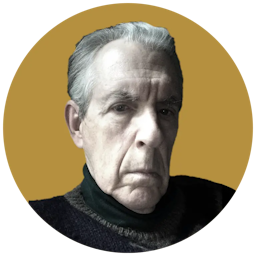Literary Biography: A Lost Cause That Refuses To Lose
Almost no one writes letters anymore, but there are now more ways of documenting a life than ever before. I’d say biographers will adapt to the new dispensation and will embark on new adventures.

‘James Purdy: Life of a Contrarian Writer’
By Michael Snyder
Oxford Univerity Press, 456 pages
‘Blaise Cendrars: The Invention of Life’
By Eric Robertson
Reaktion Books, 304 pages
‘Rilke: The Last Inward Man’
By Lesley Chamberlain
Pushkin Press, 320 pages
Trade book editors tell my agent that “literary biography is dead.” It isn’t, but evidently it does not sell enough to make a profit. The big five — Simon & Schuster, Penguin Random House, HarperCollins, Hachette Book Group, Macmillan — won’t publish a literary biography that’s likely to sell less than 10,000 copies.
A book industry insider sent me stats that confirm the dismal sales performance. Yet every year new literary biographies appear, many of them now published by university and small presses that tend to keep books in print and view success as a long-term proposition. Most trade book biographies have the shelf life of a cereal box.
So I wonder how biographers try to entice the shrinking marketplace. Michael Snyder begins with a story about the story of his subject’s life, writing an introduction titled, “The Mystery of James Purdy.”
Who doesn’t like a mystery, and what bad form it would be for me to reveal what it is. Here’s a clue, though: “In October 1956, poet Dame Edith Sitwell sat in Montegufoni, the Sitwell family’s Tuscan castle, transfixed by the stories of an unknown American writer. On a hunch, James Purdy had sent her his privately published collection. He had been struggling to get published.”
Maybe someone remembers Edith Sitwell? Anyway, the setting is attractive, and the subtitle (“Life of a Contrarian Writer”) helps. Purdy was gay, he wrote about fraught family relationships, traveled a lot, and attracted a wider variety of fans — including Tennessee Williams, Langston Hughes, John Waters, and Jonathan Franzen. Purdy’s audience is small, but the biography’s publisher compensates by touting his “cult following.”
Will the publisher’s pitch, and the author’s positioning of Purdy, super-charge sales? Perhaps, at the margins.
Here’s another try, which begins with an epigraph from Henry Miller: “My hero is Blaise Cendrars, do you see? He’s my hero in every respect: as a man, as a personality, as a writer, his style of writing and everything that he did in his life to me is marvelous.” Don’t tell me you don’t know who Henry Miller is?
Eric Robertson’s introduction tops off that encomium, touting Cendrars’s life as an “adventure story” played out in poems, novels, travel narratives, film scripts, short stories, critical essays, and radio plays.
My favorite Cendrars novel is “Sutter’s Gold,” which Mr. Robertson calls the novelist’s “most successful book,” commercially. In Cendrars’s narrative, gold rush Sutter becomes an epic figure on a Christopher Columbus scale, so that it is no wonder that both Sergei Eisenstein and William Faulkner wrote screenplay adaptations that, alas, have never been produced.
The Purdy and Cendrars biographers do not take their readers for granted. They are reaching out to an audience more likely to be turned toward more popular genres. Biography is often deemed a staple of the publishing industry, but that is not the same as saying a particular biography will attract a sizable readership.
Literary biography remains a lost cause that refuses to lose. So Lesley Chamberlain begins her book with an elegy: “the age of inwardness, the flowering of cultures in the West that were individualistic and reflective, has passed.” Probably, if you read literary biography, you know who Rilke is, and will be attracted to what the publisher calls an “incisive and compact biography.”
Implicit in Chamberlain’s prose is a lament for what has been lost in contemporary culture that literary biography aims to recover. I often hear this dirge from biographers who worry about the fate of the genre because almost no one writes letters anymore, the staple of literary biography.
I find such regrets exaggerated. There are now more ways of documenting a life than ever before. Yet that’s not the same, you say, as letters. Well, whatever is the same? On the evidence of these biographies, I’d say biographers will adapt to the new dispensation and will embark on new adventures, while, of course, others will wallow in cries about the good old days.
Mr. Rollyson is the author of “A Higher Form of Cannibalism? Adventures in the Art and Politics of Biography”

